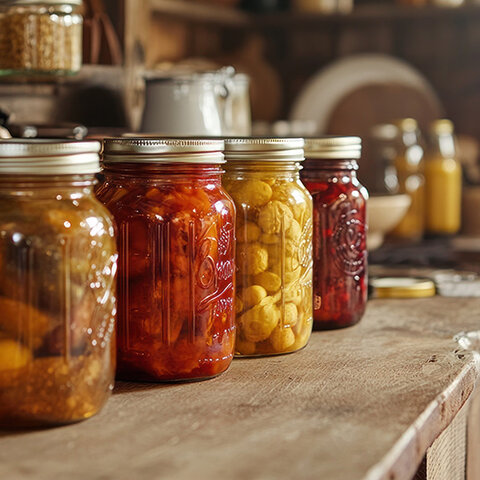
Food spoilage and deterioration is no accident. It is a naturally occurring process. To understand how to maintain the quality of food and prevent spoilage, we need to know what can cause it. This chart reviews the factors that affect food spoilage.
| Factors | Effect on Food Safety and Quality |
|---|---|
| Microorganisms | Many types of microorganisms can cause problems in food such as bacteria, molds, and yeast. The microorganisms that can cause food-borne illness are called pathogenic microorganisms. These microorganisms typically grow well at room temperatures but most do not grow well at refrigerator or freezer temperatures. Pathogenic microorganisms may grow in foods without any noticeable change in odor, appearance, or taste. Spoilage microorganisms, including some kinds of bacteria, yeasts and molds, can grow well at temperatures as low as 40°F. When spoilage microorganisms are present, the food usually has unpleasant odors, tastes, and textures |
| Enzymes | Enzymes are substances naturally present in food, which are responsible for the ripening process in fruits and vegetables. Enzymes can cause texture, color and flavor changes. For example, as a banana turns from green to yellow to brown, not only does the color change, but there is also a change in the fruit's texture. Unblanched, frozen corn-on-the-cob may taste like the cob over time. This is the result of enzyme action. |
| Air | Oxidation, a chemical process that produces undesirable changes in color, flavor, and nutrient content, results when air reacts with food components. When fats in foods become rancid, oxidation is responsible. Discoloration of light-colored fruits can be reduced by using an antioxidant, such as ascorbic acid or citric acid, before freezing. Moisture-proof packaging that keeps air out helps reduce oxidation problems. |
| Light | Light exposure could result in color and vitamin loss. Light also can sometimes be responsible for the oxidation of fats. |
| Insects, Rodents, Parasites and Other Pests | These pests require food to survive and cause damage to food, making it more vulnerable to further deterioration. |
| Physical Damage | Bruises and cracks on raw produce leave areas where microorganisms may easily grow. Improperly packaged foods, dented cans, and broken packages provide places for microorganisms, air, light, and pests to enter. Gentle handling of food items will help maintain food quality and safety longer. |
| Time | Microorganisms need time to grow and multiply. Other reactions, such as oxidation and enzyme action also require time to develop. Purchase reasonable quantities, especially perishable foods, to help avoid long-term storage. |
| Temperature | Temperature affects how long foods can be safely stored. Food deteriorates faster at higher temperatures. Recommended temperatures for storage areas are: 50-70°F for cupboard/pantry storage, 40°F or below for refrigerator temperatures, and 0°F or below for freezer temperatures. Microorganisms, both spoilage and pathogenic, grow rapidly at room temperature. To slow microbial growth and the enzymatic and oxidation processes, store foods at lower temperatures. |
Sources:
Protecting Your Family from Food Spoilage, United States Department of Agriculture (USDA)
Refrigeration and Food Safety, Food Safety and Inspection Service (FSIS), United States Department of Agriculture (USDA)
What are the signs of food spoilage?, United States Department of Agriculture (USDA)
This article has been peer-reviewed. It was updated in 2024.
Tags:



